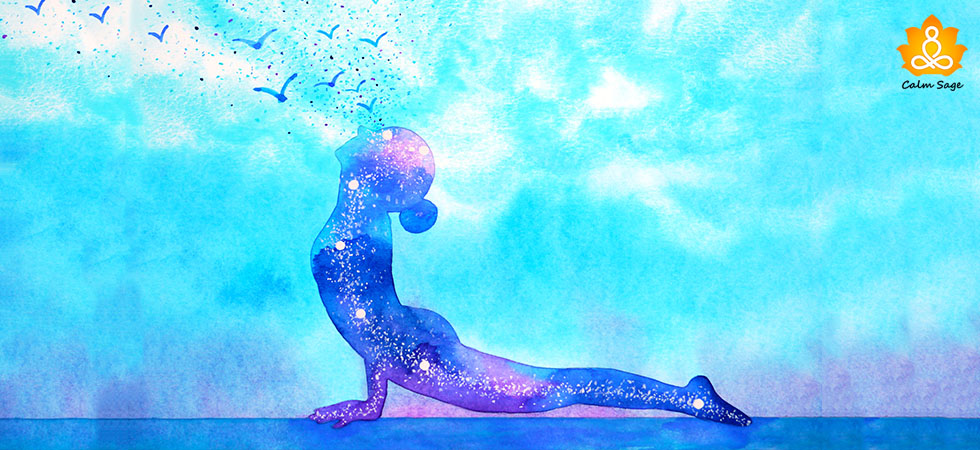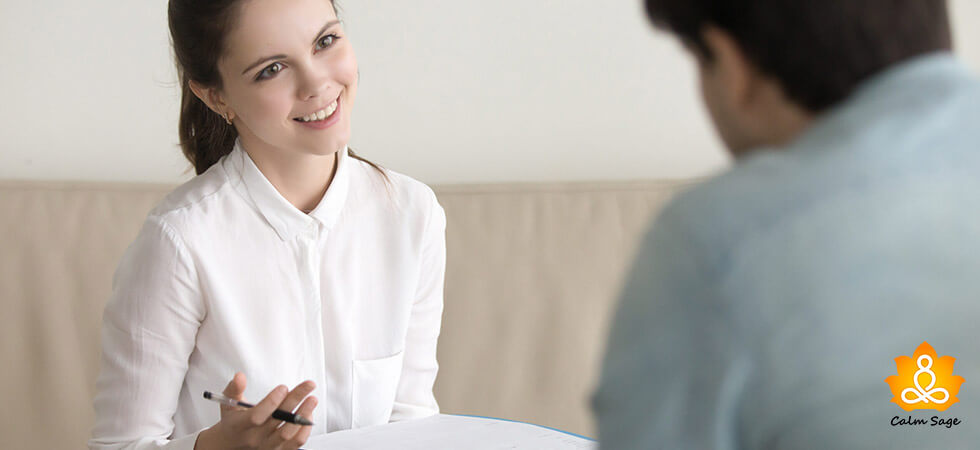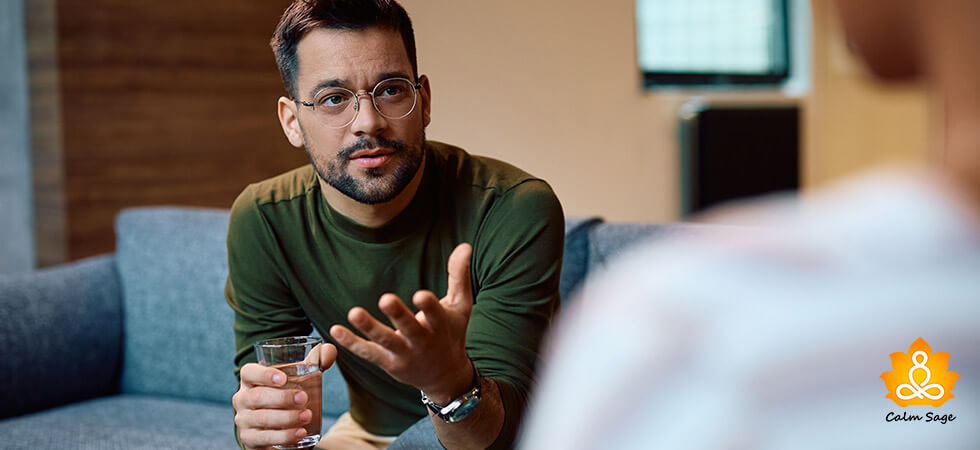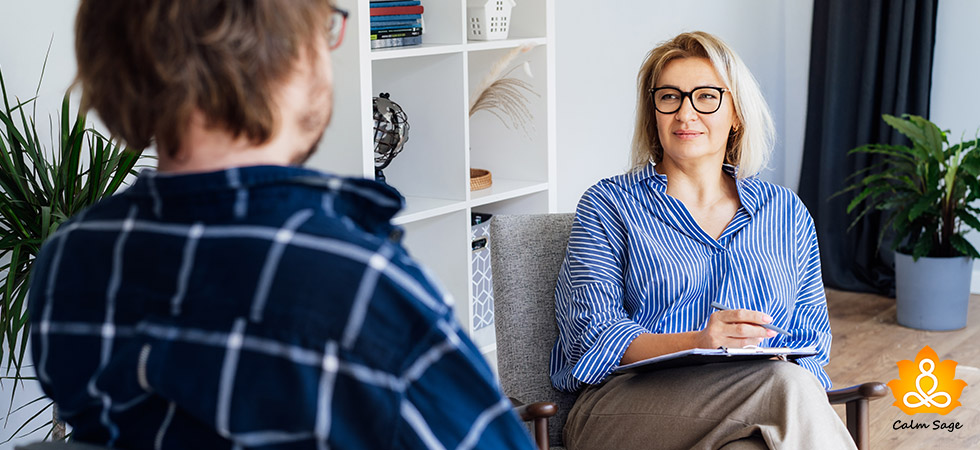Maximize Your Therapy Outcomes With These Embodiment Techniques

Our mind and body are closely knitted together!
While we might be aware of this fact now, it took many years and research studies to understand this unique and important relationship between the two.
It might surprise you that this mind-body relationship has an impact on the therapy that you are taking and its outcomes. Your therapeutic alliance can be maximized with the help of embodiment techniques. It makes your treatment approach holistic by involving both mind and body in it.
Why do you need embodiment techniques to maximize therapy?
While the therapist will do his part in maximizing the outcomes of the therapy, you have to work on yourself for it to happen. While the therapist will unlock your inner struggle, you have to release your physical stiffness and pain. While the therapist will help you regain your inner calm, you have to work on building physical strength.
The therapist will focus on your mind and its struggle irrespective of the therapy that you take.
But then what about you?
You have to focus on your body to get a better understanding of your internal and external needs. By being aware of your physical reactions you learn when and why you are angry or sad. This is why it is recommended that you work with the embodiment techniques to become aware of self and build a strong relationship between your body and mind. With these two goals met the success rate of your therapy increases manifold. With the help of embodiment techniques you involve completely in the therapy from mind to body to soul.
Are you ready to bring in a cohesive change in your life? Time to learn the most powerful embodiment techniques of all time!
Embodiment Techniques To Maximize Your Therapy
1. Focus on Your Breath
Probably the first impact of any imbalance in your mental state of calm is displayed in your breathing. Think of the times when you are getting on stage or going for a date. You will see an automatic drift in your usual breathing pattern. Showing a clear mind and body connection.
So, while therapy will teach you other effective coping skills you can practice to focus on your breath. There are different breathing techniques that you can try. Four of my favorite ways are discussed below:
2. Be Mindful Of Your Natural Breath
Just by being aware of your breath, you can rejoice calmness. As you breathe in focus on your breath reaching to lungs and filling it. Then you while you exhale it focus on your breath leaving your lungs and coming out of your nose. Be gentle, slow, and aware of each breath.
3. 4-7-8 Breath
This breathing exercise always seems to work for everyone under almost every situation. Here is how you can practice it:
Inhale for 4 seconds.
Hold your breath for another 7 seconds.
Slowly exhale for 8 seconds.
4. Smell The Rose Blow The Candle
This mindful deep breathing tool is super helpful and effective. You can practice it by following these steps:
Take a deep breath in from your nostrils (like you are smelling roses).
Hold your breath.
Now slowly exhale from your mouth (like you are blowing candles).
Repeat these 3 steps 4 times (for completing 4 rounds of it).
You will eventually feel your mind chatter, raising heart, boiling nerves, and other such feelings come to a calmer situation.
5. Anulom-Vilom Pranayama
Alternate Nostril Breathing is a great tool to focus on your breath. It also offers various mental health benefits. Follow the steps below to practice this super powerful breathing pranayama:
- Choose a comfortable position to sit in (sukhasana, vajrasana, padmasana). Making sure that your back is straight with the chin slightly tucked in towards the chest. Then close your eyes.
- Lift your right hand first, press your middle and first finger towards your palm, while keeping the other fingers extended
- Place your right thumb on the flap/side of your right nostril. Inhale deeply and slowly from your left nostril with your mouse closed.
- Now place your other two fingers (little and ring) on the flap/side of your left nostril. Release your thumb from the right nostril and exhale slowly and deeply.
- Next, inhale from right nostril with keeping the left one closed with your pinky and ring fingers
- Place your thumb on the flap/side of your right nostril and exhale slowly and deeply from the left nostril.
- This is one cycle of anulom vilom pranayama.
- Repeat the same breathing pattern for 5 minutes and increase this time frame as per your convenience.
- Just remember to finish your session with an exhale on the left side.
With your mind being calm it is time to work on the other parts of your body.
6. Get A Dose of Yoga
Literature and research support that there is no better way to boost your mental wellness and to connect with your mind then yoga. In fact, the word yoga translates to “unite.” It truly unites your mind and body. Yoga energizes your body and provides clear room for your thoughts, feelings, and memories to process effectively.
Now depending on the mental health condition that you are seeking help for different yoga poses will work for you.
Just make sure that you start it slow and practice yoga religiously to see its positive impact on your life and the therapy outcomes.
Different yoga poses for different mental health conditions:
Mental Health Condition |
Yoga Poses |
| Depression | Balasana (Child’s Pose) Halasana (Plow Pose) Adho Mukha Svanasana (Downward-Facing Dog Pose) |
| Anxiety
|
Baddha Konasana (Butterfly Pose) Setu Bandha Sarvangasana (Bridge Pose) Viparita Karani (Legs-Up-The-Wall Pose) |
| Post Traumatic Growth Disorder (PTSD)
|
Tadagasana (Pond Pose) Urdhva Mukha Svanasana (Upward-Facing Dog Pose) Simhasana (Lion Pose) |
| Stress
|
Marjaryasana (Cat Pose) Bhujangasana (Cobra Pose) Ananda Balasana: Happy Baby Pose |
| Borderline Personality Disorder
|
Tadasana (Mountain Pose) Virabhadrasana (Warrior Pose) Adho Mukha Svanasana (Downward-Facing Dog Pose) |
| Eating Disorders
|
Halasana (Plow Pose) Dhanurasana (Bow Pose) Sirsasana (Headstand Pose) |
To take care of your overall physical health you can also practice flow yoga daily. Additionally, discuss this embodiment technique with your therapist.
The recent therapy trend has also welcomed yoga therapy as a complementary therapy. Research has shown a positive impact of the same on individuals.
7. Sweat It Out
If yoga is not your route to build on your physical strength then you can sweat your physical exertion with the help of exercises. While you release your mental clutter, chaos, and pain to the therapist, exercise will help you release your external stiffness and exertion. Now again different exercises will offer you different benefits. But on a larger scale, any form of exercise is helpful to maximize your therapy outcomes. Ultimately your body will be moving and releasing all the muscle tension.
Other Embodiment Techniques To Maximize Therapy Outcomes
Apart from the three major embodiment techniques discussed above, there are some other ways to make your mind-body connection stronger and maximize your therapy outcomes. This includes:
- Walking out in the green.
- Taking a warm water bath.
- Take swimming laps.
- Spend some time gardening.
- Engage in cooking or baking.
Each of these embodiment techniques is physical in nature but have a pool of mental relaxation to offer.
All the embodiment techniques discussed above are backed with science and are super useful as a complement to psychotherapy. So, pick the one that suits you the best and share your experience with us in the comments section!
Remember it requires two hands to clap! Similarly, it requires equal efforts from your side as well to make the most out of the therapy.
Stay strong it is just a phase that you sail through.
If you need any help or support through this journey of yours feel free to reach us info@calmsage.com
More Relevant Articles:
‘Which Mental Therapy is Best For Me?” Find Out Now
Debunking the Top 10 Myths of Therapy and Online Therapy For You





















The section of Yoga poses is so good.
Found breathing exercises really beneficial. Powerful embodiment technique which is really good for calmness as well.
I really love the way you have presented useful information. Shared and saved for future ?
Certainly, the mind-body connection is best but I face a problem when practicing things how can I deal with it?
People took therapy but they are unaware of these facts of maximizing benefits from it. Your post is very informative and will help many.